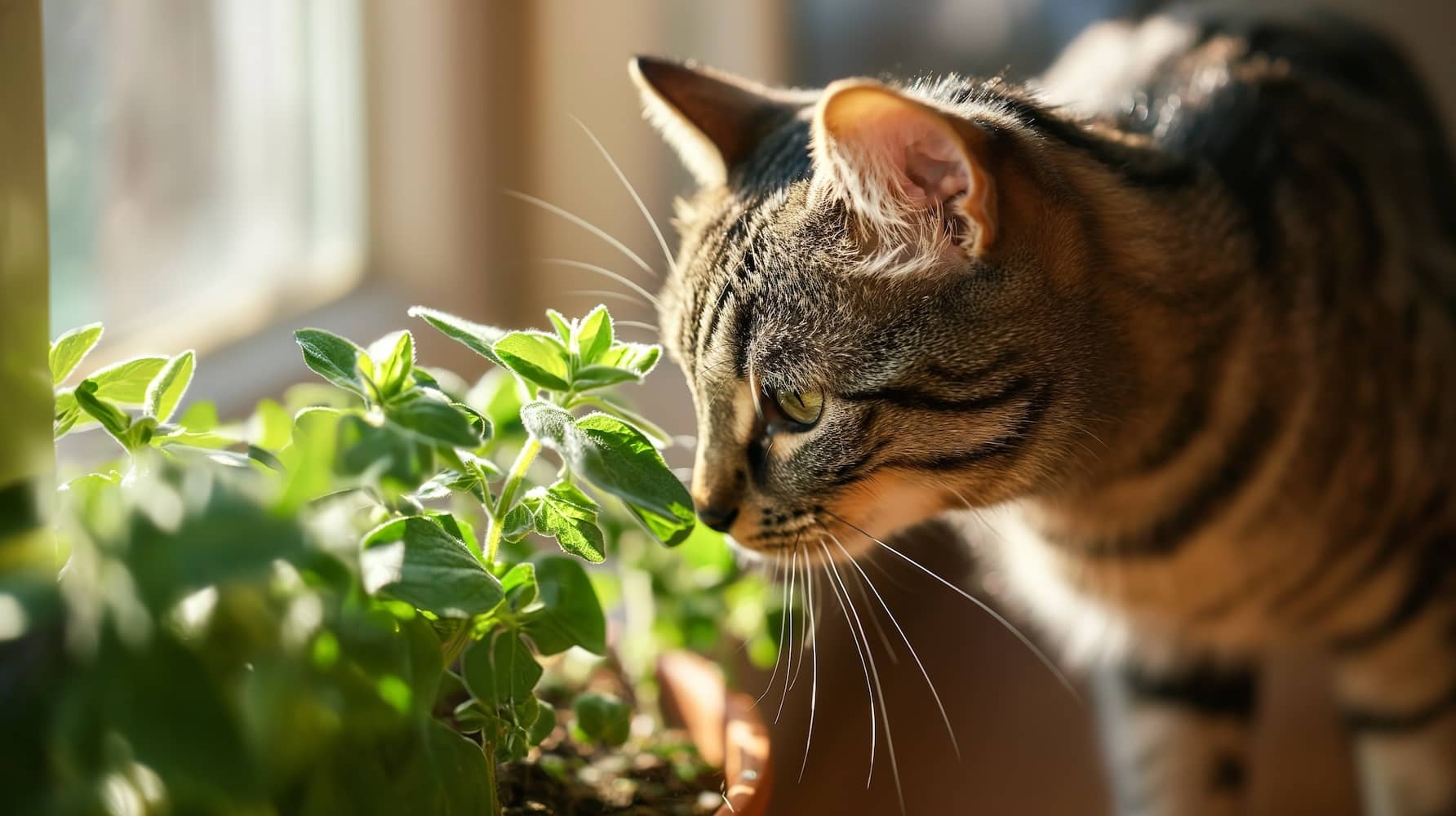The side effects of catnip on cats include increased excitement and hyperactivity, followed by relaxation and sedation. Catnip can also cause gastrointestinal upset in some cats.
Catnip’s effects on cats are well-known and can vary from cat to cat. It is important to monitor your cat’s behavior and response to catnip and use it sparingly to avoid any potential negative effects.

Credit: issuu.com
What Is Catnip?
Catnip, also known as Nepeta cataria, can elicit both positive and negative reactions in cats. While its stimulating effects can induce playfulness and euphoria, excessive consumption may lead to symptoms like vomiting, diarrhea, and agitation. It’s advisable to use catnip in moderation to avoid potential adverse effects on your feline companion.
Catnip, also known as Nepeta cataria, is a herb that belongs to the mint family. It is native to Europe but can now be found growing in various parts of the world. It is well-known for its ability to attract and stimulate cats, evoking behaviors such as rolling, rubbing, and jumping.
Effect On Cats
Catnip has a unique effect on cats, causing them to become highly excited and playful. When cats come into contact with catnip, it activates the receptors in their noses, which then releases certain chemicals that stimulate their brain. This stimulation can lead to a range of reactions, including hyperactivity, euphoria, and relaxation.
Catnip’s effect on cats is completely harmless and is often a source of great entertainment for both cats and their owners. However, it is important to note that not all cats are equally sensitive to catnip. The reaction to catnip is genetically determined, and approximately 50-75% of cats are known to have a reaction to it.
Types Of Catnip
There are different forms of catnip available in the market that can be used to entice your furry friend. Here are some common types of catnip:
- Dried Catnip: Dried catnip leaves are the most commonly available form of catnip. They can be sprinkled on toys, scratching posts, or placed inside a catnip-filled toy.
- Catnip Spray: If you find that your cat doesn’t show much interest in dried catnip, you can try using catnip sprays. These sprays usually contain concentrated catnip oil and can be directly applied to toys, scratching posts, or even furniture to attract your cat’s attention.
- Catnip Toys: Many pet stores offer catnip-infused toys that are specifically designed to stimulate cats. These toys are filled with dried catnip and provide entertainment and exercise for your furry friend.
If you decide to introduce catnip to your cat, it is important to do so in moderation. While catnip is generally safe, a small portion of cats may experience certain side effects. The next section explores these potential side effects in more detail.

Credit: www.amazon.com
Understanding The Side Effects
Discover the potential side effects of catnip on cats and learn how to understand and manage them effectively. Gain insights into the impacts catnip can have on feline behavior and health, empowering you to make informed decisions for your furry friends.
Understanding the Side Effects Catnip, also known as Nepeta cataria, is a perennial herb that belongs to the mint family. It is well-known for its effects on cats, eliciting a range of stimulating behaviors and reactions. While catnip is generally safe for cats, understanding the side effects is vital for responsible pet ownership. This article aims to explore the physical and behavioral effects that catnip can have on our feline friends. Physical Effects When it comes to physical effects, catnip can trigger various reactions in cats. Some cats may display hyperactivity, while others may become more relaxed. These physical responses are primarily attributed to the organic compound nepetalactone found in catnip. Bold and beautiful, catnip stimulates several senses, with most cats responding to its allure. 1. Increased energy and excitement: When a cat is exposed to catnip, it may exhibit a sudden burst of energy. Engaging in playfulness, jumping, and running are common physical manifestations observed in cats under the influence of catnip. 2. Dilated pupils: As the effects of catnip set in, a cat’s pupils may become larger than usual. This physiological response is nothing to be concerned about, as it is temporary and harmless. 3. Rolling and rubbing: Another physical behavior often associated with catnip is rolling and rubbing. Cats may roll around in the catnip or rub their faces against it, enhancing their sensory experience. Behavioral Effects In addition to the physical effects, catnip can also lead to various behavioral changes in cats. These effects can vary from cat to cat, depending on their individual sensitivities and personalities. 1. Fascination and fixation: Cats are naturally curious animals, and catnip can intensify their sense of fascination. They may become fixated on the source of catnip, seeking it out and exploring it in depth. 2. Playfulness and heightened activity: One of the most well-known reactions to catnip is increased playfulness. Cats may chase toys, engage in pouncing, and exhibit more active behavior while under the influence of catnip. 3. Calmness and relaxation: Contrary to the stereotype of catnip-induced hyperactivity, some cats may actually experience a sense of calmness and relaxation. They may become more laid-back and content, enjoying a soothing state of bliss. Understanding the side effects of catnip is essential to ensure the safety and well-being of our feline companions. While most cats respond positively to catnip, it is crucial to monitor their behavior and use catnip in moderation. If you have any concerns regarding your cat’s reaction to catnip, consult with your veterinarian for further guidance. Remember, catnip is a tool that can enhance your cat’s playtime and provide mental stimulation. By understanding the physical and behavioral effects of catnip, you can better appreciate and enjoy the unique interactions between your cat and this extraordinary herb.Potential Dangers
Catnip is well-known for its euphoric effects on felines, but it’s important to be aware of the potential dangers associated with its use. While catnip is generally safe for cats, there are some risks to consider, particularly when it comes to overexposure and misuse. Understanding the potential dangers of catnip can help cat owners make informed decisions about whether or not to introduce it to their pets.
Addiction Risk
Catnip contains a compound called nepetalactone, which acts as a stimulant for cats. With regular or excessive exposure, some cats may develop a dependence on catnip, craving the euphoric effects it produces. This can lead to overconsumption and behavioral issues, such as agitation and irritability when catnip is not available.
Overstimulation
While moderate exposure to catnip can induce playful behavior and relaxation in cats, excessive use can lead to overstimulation. Cats may become hyperactive, agitated, or even aggressive, posing a risk to both the cat and its surroundings. Overstimulation may also disrupt the cat’s sleep patterns and cause anxiety or stress.
Surprising Insights
Catnip Sensitivity
Cats may have varying sensitivity levels to catnip, with reactions ranging from euphoria to indifference.
- Some cats are genetically predisposed to respond strongly to catnip, while others show no interest.
- Observing your cat’s reaction to catnip can help determine its sensitivity level.
Alternatives
For cats that do not react to catnip, there are alternative plants that can elicit similar responses.
- Valerian and silver vine are effective alternatives to catnip for cats that are not affected by it.
- Experimenting with different plants can help find the right stimulant for your cat.
Managing Catnip Use
Catnip can have a range of effects on our feline friends. When it comes to managing catnip use, it’s crucial to understand dosage and frequency, as well as observing your cat’s behavior to ensure a positive experience. Let’s delve into how to effectively manage catnip use with your furry companion.
Dosage And Frequency
When giving your cat catnip, start with a small pinch to gauge their reaction.
Limit the amount of catnip given to your cat as too much can lead to overstimulation.
Offer catnip to your cat a maximum of once a day to prevent tolerance from building up.
Observing Your Cat
Monitor your cat’s behavior after exposure to catnip to ensure they are enjoying it without any adverse reactions.
Look for signs of excitement, rolling, rubbing, and playful behavior as positive responses to catnip.
If your cat shows signs of aggression or anxiety, discontinue catnip use and consult your veterinarian.

Credit: tallahasseereports.com
Frequently Asked Questions For Side Effects Of Catnip On Cats
What Are The Common Side Effects Of Catnip On Cats?
Catnip can cause temporary behavior changes in cats like increased playfulness and excitement, followed by relaxation. Some cats may exhibit hyperactivity or aggression with extended exposure. It’s essential to monitor your cat’s reaction to catnip and limit their exposure if needed.
Is Catnip Safe For All Cats To Use?
Most cats respond positively to catnip, but not all are affected as sensitivity is genetic. Senior cats and kittens may not show a response. It’s safe in moderation, but excessive use can lead to digestive issues. Always supervise your cat when introducing new toys with catnip.
Can Catnip Have Adverse Effects On Cats’ Health?
Catnip is generally safe for cats, but excessive consumption can lead to gastrointestinal upset like vomiting or diarrhea. If your cat shows any signs of discomfort or unusual behavior after exposure to catnip, consult your veterinarian promptly. It’s essential to use catnip responsibly and in moderation.
Conclusion
Catnip can have various side effects on cats, including excitement, sedation, and potential digestive issues. It is essential for pet owners to observe their cats’ reactions to catnip and use it in moderation. Consulting a veterinarian for advice on the appropriate use of catnip can help ensure the health and well-being of our feline friends.



